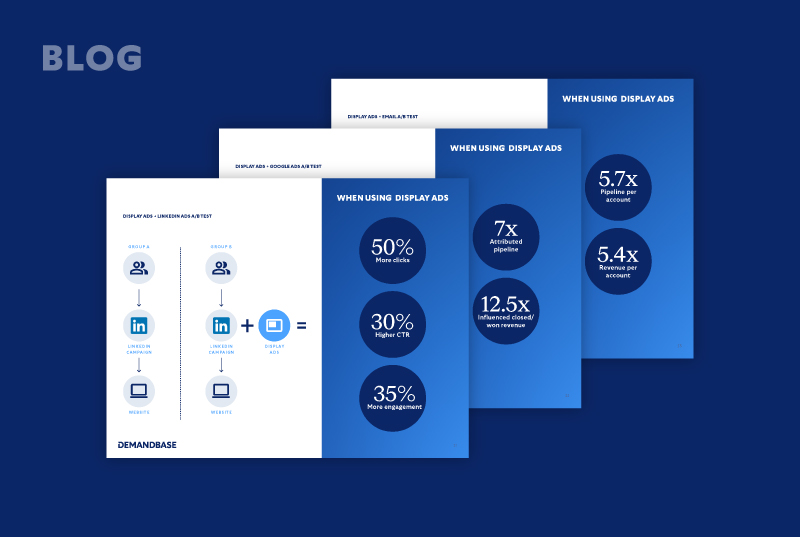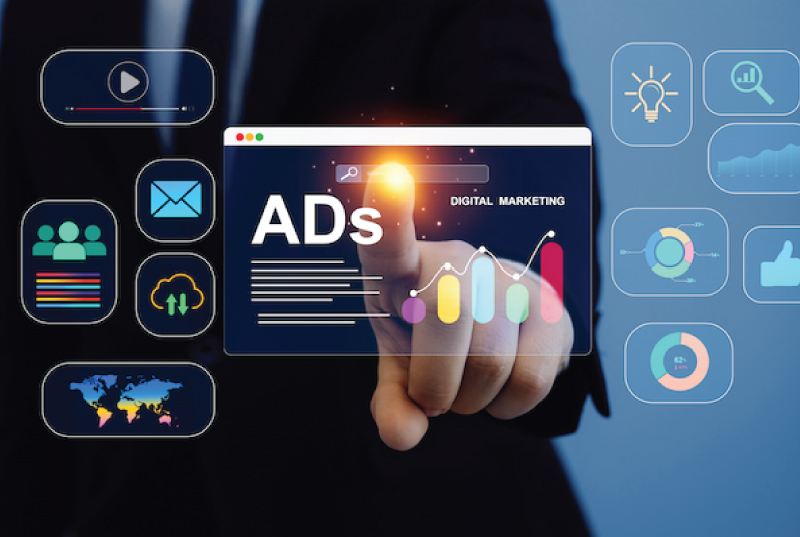An Accidental Journey (and Success!) into Account-Based Advertising
Learn how to keep accounts engaged throughout months-long buying cycles

Hannah Jordan
Digital Marketing Director, Demandbase
As a digital marketer, I’m always looking for new ways to move the needle and enhance the impact of campaigns (hopefully, I’m not alone in this). And while B2B deals often have larger dollar amounts associated with them, they can also take a longer amount of time to move through the cycle. Seriously, how do you keep accounts engaged throughout buying cycles that can take upwards of nine months?
The answer is actually simpler and easier to get started than you might think. So simple, in fact, that we successfully executed an entire program around it without even realizing it. Enter the beautiful ROI-increasing, alignment-enhancing, engagement-driving world of account-based advertising.
Account-based advertising: how it started
It all began with a campaign that was industry-specific. The Sales team saw a great opportunity for our solutions within the industry, but was having a hard time gaining traction because the accounts were unfamiliar with our company. We worked closely with the team to develop messaging that would be relevant, speaking to the specific pain points they had and what Sales had heard in the field.
We first launched campaigns in paid search, geo-targeting the headquarter locations of the target accounts within that industry. We then worked with the Sales and Product Marketing teams to create a keyword list to use and added in the ad copy we had all collectively come up with.
Next, we began building the campaign in paid social. We targeted the accounts using both a list upload as well the company names directly within LinkedIn itself. We then refined the audience for the relevant job functions and personas, seniority levels, and other demographics. For the ads themselves, we used messaging similar to what we had used for paid search ads, and personalized the creative aspect so it too was more relevant for the industry.
Account-based advertising: how it went
As the campaign ran, we tracked the usual metrics such as clicks, conversions, and engagement while also layering on more account-focused metrics. This included areas such as tracking the website activity for the targeted accounts and monitoring their intent topics. We then shared key insights with the Sales team so they could personalize their outreach efforts based on what we were seeing in the campaign. As our combined efforts continued, it was encouraging to see the intent scores, website activity, and campaign engagement increasing across the accounts.
During the next quarter, the Sales team wanted to run a new campaign promoting a solution our company had just released. They provided us with a list of accounts they thought would be most interested in the solution and we again worked with them and the Product Marketing team to create the messaging. Following a similar process as we had done for the industry-specific campaigns, we then built and launched the new solution-specific campaigns.
As these continued to run, we noticed a few of the target accounts had also been a part of, and engaged with, the initial industry-specific campaign. At the time, this was a great indicator that the industry campaign had worked well enough increasing general brand awareness for them to now be interested in our specific solutions. We happily watched as the performance continued to increase and as Sales reported back they were getting more meetings on the calendar. It was paying off, we’re actually moving the needle with this!
What happened next?
As the final quarter of the year came around, we sat down with the Sales team again to go over what their plans were for Q4 around the account-based programs they wanted to run. For this quarter, they had two big opportunities that they wanted to run highly-targeted campaigns for. When they told us which two accounts they were, we gave ourselves a small pat on the back as we came to find out they were both part of our previous account-based campaigns.
We began our process for a third time. Getting information about the opportunities, who the key contacts were, what competitors we were up against, etc. We customized the messaging, personalized the creative, launched the campaigns, and continued tracking and reporting performance.
The first quarter of the following year, both deals went to closed-won. And not to brag, but with a combined ARR of over $1 million (a sweet, sweet payoff). While we celebrated watching our influenced pipeline dollars go through the roof and the sales teams subsequent commission checks – we also reflected on just how cool what we had actually done was. We had taken these deals all the way through the buyer’s journey with our account-based campaigns, engaging with them every step of the way.
Starting at the early stages, we increased brand awareness within their industry. As they moved forward, we boosted their knowledge on our solutions and specific capabilities. And finally, provided vendor evaluation guides and third-party credibility through analyst reports during the opportunity cycle. In short, we targeted the right accounts, with the right content, at the right time, based on where they were at in the funnel.
Key learnings
So, what did we learn after a year of running our account-based advertising campaigns?
- Start small and think big! Find an opportunity where you can quickly and easily run a pilot, whether that’s a particular industry or a specific set of accounts in the pipeline. As you work through it, you’ll start to get more ideas about how you can grow your account-based efforts.
- Collaboration and communication are key for several reasons. First, by setting up time with Sales early on, we were able to plan for upcoming campaigns and map out what content we would be using. If we noticed we had any content gaps, we could then leverage Product Marketing to create new assets to fill them in. Additionally, working with both teams on messaging was critical. Sales provided insights they had heard directly in the field while Product Marketing assisted us with the more technical messaging. Finally, I recommend having weekly check-ins with the Sales team. It’s a great opportunity to keep them updated on performance and for them to share any updates that may affect the campaigns.
- Measure and scale! The great thing about advertising is that you don’t need additional headcount and it’s so flexible to grow your investment quickly. Measure things such as deal sizes and sales-cycle lengths of accounts in an account-based advertising campaign versus accounts that aren’t to show how impactful they can be. Additionally, find easy ways to scale your efforts. For example, I created a repository for any account-based campaigns we had previously run. That way if a different Sales team wanted to run something similar, it was more of a plug and play rather than starting from scratch every time.
I always tell this story saying that, by accident, we had just successfully run our first full-funnel account-based digital program. Except it wasn’t by accident. This is the way the world of marketing was moving toward, I just didn’t know it at the time.
Hopefully, this goes to show that you don’t need to be an ABM expert to get account-based programs up and running and achieve success. I honestly didn’t have much knowledge about what account-based marketing even was at the time. But it’s possible. Not only possible, but fun! Fun to work so closely with the teams, fun to get excited as they move to the next journey stage, to see how impactful these programs really are, and FUN to all work towards a common goal and celebrate when you get there.
So, what are you waiting for?

Hannah Jordan
Digital Marketing Director, Demandbase



